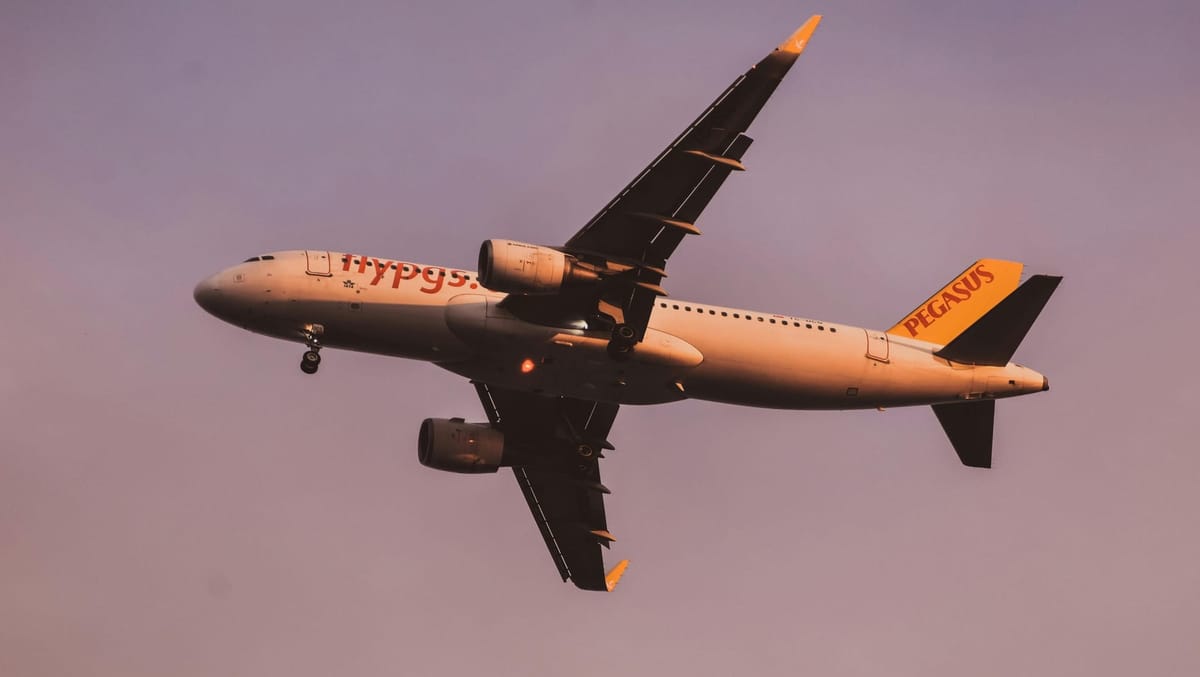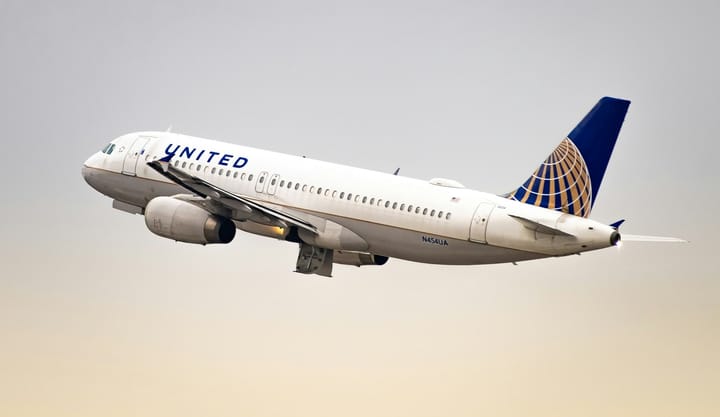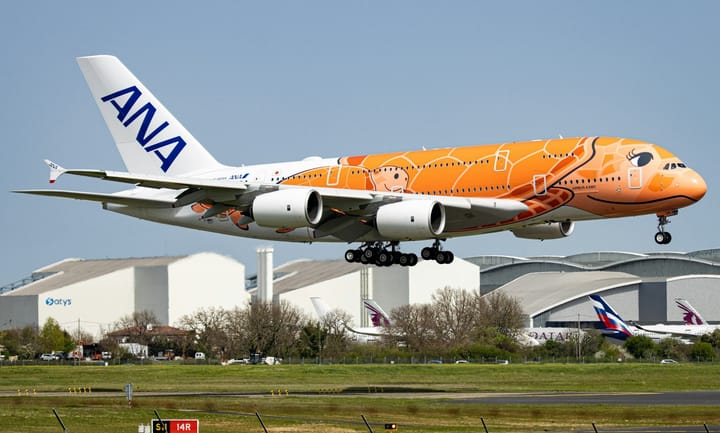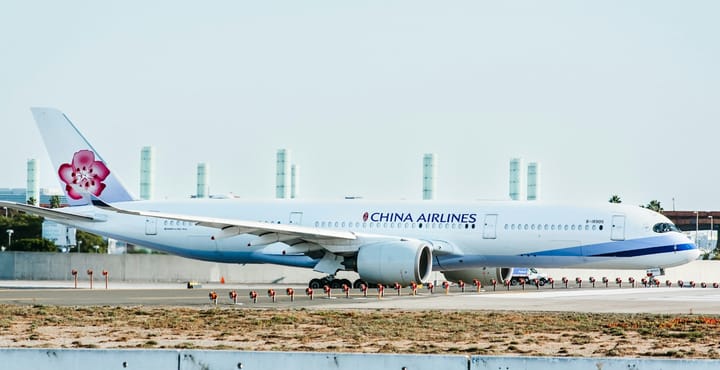Pegasus Airlines balances low-cost flight operations with sustainability, optimizing CO₂ emissions and market performance through advanced strategies.
DISCLAIMER: Pegasus Airlines was unable to publish operational data for March and April 2020 on its Investor Relations website, which is understandable given the challenges of the COVID-19 pandemic. As a result, data for these two months is not available in the analytical graphs and charts. The information presented reflects the published data from available periods.
1. Total Passenger Carried
Pegasus Airlines’ passenger growth trajectory is a direct outcome of its deliberate positioning as a hybrid low-cost carrier (LCC) bridging affordability with strategic service enhancements. The airline transported more than 30 million passengers in 2023, a 18.5% increase over 2022, driven by its dual focus on price-sensitive leisure travelers and a growing segment of hybrid travelers seeking optional premium services.
Turkey’s geographic role as a crossroads between Europe, Asia, and the Middle East provides Pegasus with a natural advantage in capturing transit and origin-destination traffic. The airline capitalizes on this by prioritizing routes to destinations with high tourism potential, such as Antalya (a Mediterranean resort hub) and Izmir (a gateway to Aegean coastal towns). Internationally, Pegasus has expanded its footprint in Central Asia (e.g., Almaty, Tbilisi) and Western Europe (e.g., Berlin, Amsterdam), markets where visa liberalization agreements and Turkey’s diplomatic outreach have eased travel restrictions.
A critical driver of demand is Pegasus’ partnerships with Turkish tourism stakeholders, including hotel chains like Rixos and online travel platforms such as Booking.com, which bundle flight tickets with accommodation to attract inbound tourists. Post-pandemic, the Turkish government’s “Homecoming” tourism campaign, offering subsidies for flights and hotel stays, further amplified inbound traffic.
The airline’s 2019 relocation to Istanbul Airport (IST) marked a turning point, enabling seamless connections between its domestic network (covering 40+ Turkish cities) and international routes. IST’s advanced infrastructure allows Pegasus to optimize transfer times, attracting transit passengers from Europe to Asia. In 2022, the introduction of “Pegasus Plus” premium seats (with extra legroom and priority boarding) catered to cost-conscious business travelers, boosting load factors on key routes like Istanbul-Dubai by 12%.
Seasonality plays a significant role: summer months see a 30% surge in passengers due to holiday traffic, prompting Pegasus to deploy larger A321neos on Mediterranean routes. Conversely, winter demand shifts to cultural destinations like Cappadocia, supported by dynamic pricing algorithms that adjust fares in real time to maintain high occupancy.
2. Total Available Seat Capacity
Pegasus Airlines’ seat capacity strategy revolves around maximizing operational efficiency through fleet standardization and cabin density. With a fleet of 108 Airbus aircraft (as of Q1 2024), primarily A320neo and A321neo models, the airline has phased out older Boeing 737-800s to reduce fuel costs and increase seating density.
The Airbus A320neo, configured with 186 seats, and the A321neo (239 seats), form the backbone of the fleet. These aircraft offer a 15% reduction in fuel burn compared to previous-generation planes, enabling Pegasus to maintain profitability on thin routes. The airline’s 2021–2025 fleet renewal program aims to increase the average seats per aircraft from 180 to 200, partly through retrofitting existing planes with slimmer Recaro seats that add 8–12 seats per cabin without compromising regulatory pitch requirements.
Seasonal demand fluctuations are managed through flexible leasing agreements. For example, in summer 2023, Pegasus wet-leased six A320s from Nordic Aviation Capital to bolster capacity on Antalya–Moscow and Istanbul–Sharm El Sheikh routes. This agility allows the airline to scale seat capacity by 20% during peak periods without long-term financial commitments.
The introduction of the A321LR (long-range) variant in 2022 unlocked new opportunities for medium-haul routes. With a range of 4,000 nautical miles and a high-density 239-seat layout, these aircraft serve markets like Istanbul–Riyadh and Istanbul–Casablanca, where demand justifies high-capacity operations but doesn’t warrant widebody deployment.
Cabin configuration is tailored to market needs: domestic routes prioritize maximum density, while international flights feature a mixed layout with “Pegasus Plus” seats (8–12 per flight) to upsell premium amenities. Ancillary revenue from seat selection, which contributes 25% of total ancillary income, is directly tied to this tiered seating strategy.
3. Total Number of Flights
Pegasus Airlines’ flight volume—reached 200,000+ flights annually in 2024—reflects its commitment to a high-frequency, point-to-point network model. The airline operates a lean schedule focused on rapid turnarounds (averaging 28 minutes), allowing each aircraft to fly up to 8 sectors daily, compared to 5–6 for full-service carriers.
Istanbul Sabiha Gökçen (SAW), Pegasus’ primary hub, handles 65% of its flights, with a focus on domestic routes like Istanbul–Ankara (12x daily) and Istanbul–Izmir (10x daily). These shuttle-style frequencies compete directly with Turkey’s intercity bus network, offered fares as low as $15 one-way. At Istanbul Airport (IST), Pegasus leverages 24-hour operating rights to schedule red-eye flights to Western Europe (e.g., London Luton, Paris Orly), optimizing aircraft utilization during off-peak hours.
Pegasus Airlines quickly adapted to demand changes during the COVID-19 pandemic by converting passenger cabins to carry medical supplies on routes like Istanbul–Shanghai. By 2023, leisure demand rebounded, leading to a 22% year-over-year increase in flights, especially to Greece and Egypt.
Slot constraints remain a challenge: at SAW, Pegasus holds 45% of all slots, but EU regulations limit expansion at congested EU airports like Berlin Brandenburg. To circumvent this, Pegasus partners with smaller airports (e.g., Cologne Bonn instead of Düsseldorf) where slot availability and lower fees enable higher frequencies.
4. Available Seat Kilometers (ASK)
Available Seat Kilometers (ASK), a critical measure of airline capacity, reached 58 billion in 2023 for Pegasus, underscoring its shift toward longer international routes. ASK growth (22.2% YoY) has been driven by the deployment of A321LRs on 4+ hour flights and strategic network diversification beyond traditional Mediterranean markets.
Historically, Pegasus concentrated on short-haul routes (1–3 hours), where high frequencies and low costs ensured dominance. However, rising competition from Turkish Airlines’ subsidiary AnadoluJet and ultra-LCCs like Wizz Air prompted a pivot to medium-haul markets. The A321LR’s 4,000 nm range enables nonstop flights from Istanbul to Jeddah, Moscow, and Lagos—routes previously reliant on connecting traffic.
Central Asia has emerged as a focal point, with ASK to Kazakhstan and Uzbekistan growing by 34% in 2023. Pegasus capitalizes on Turkey’s visa-free agreements with CIS countries, targeting migrant workers and traders who prioritize cost over frills. Similarly, in Western Europe, the airline serves diaspora communities in Germany and the Netherlands, where ASK increased by 12% despite EU emissions regulations raising operating costs.
Fleet utilization plays a key role: Pegasus achieves 13.5 block hours per aircraft daily, 20% higher than the LCC average, by minimizing ground time and optimizing maintenance schedules. This intensity is critical for ASK efficiency, as longer routes inherently require more aircraft time.
Regulatory hurdles persist for Pegasus Airlines. Bilateral air service agreements between Turkey and EU states cap flight frequencies on key routes, such as 14x weekly to Germany, forcing the airline to prioritize higher-yield destinations like Düsseldorf Airport (DUS) over secondary cities. Similarly, slot restrictions at Dubai International Airport (DXB) limit available capacity, prompting Pegasus to focus on Sharjah Airport (SHJ) and Ras Al Khaimah Airport (RKT) instead.
5. Average Number of Passengers Carried Per Flight
Pegasus Airlines’ average passengers per flight in 2023 were approximately 165–170, reflecting its focus on balancing high-density seating with route-specific demand. The airline's Airbus fleet, including the A320neo (186 seats) and A321neo (239 seats), is designed to minimize empty seats. Pegasus uses dynamic seat pricing, adjusting fares in real time based on booking patterns, ensuring even off-peak flights achieve 75%+ occupancy. For instance, last-minute promotions on routes like Istanbul Airport (IST)–Trabzon Airport (TZX) offer fares as low as $15-20 to fill remaining seats, targeting budget-conscious travelers.
Seasonal adjustments help refine passenger density for Pegasus Airlines. During summer, larger A321neos replace A320s on Mediterranean leisure routes like Antalya Airport (AYT)–Moscow, increasing average passengers per flight by 20%. In winter, smaller aircraft are used on cultural routes such as Istanbul Airport (IST)–Kayseri Airport (ASR) to match lower demand. Pegasus’ ancillary strategy, which includes paid seat selection and priority boarding, encourages early bookings, helping stabilize load profiles.
Operational agility helps Pegasus Airlines mitigate demand shocks. During the 2022 Russo-Ukrainian conflict, the airline quickly reallocated aircraft from suspended Russia-Ukraine routes to high-demand Middle Eastern corridors like Istanbul Airport (IST)–Dubai International Airport (DXB), maintaining an average of 162 passengers per flight despite geopolitical disruptions.
The 2023 integration of AI-driven revenue management software reduced empty seats by 8%, lifting the annual average to 170 passengers per flight.
6. Passenger Load Factor (%) Analysis
Pegasus consistently maintains load factors above 85%, with 87.61% in 2024 and 84.64% in 2023, surpassing many European LCC competitors. Key to this performance is Pegasus’ “density-first” network planning. High-frequency routes (e.g., Istanbul–Izmir, 10x daily) operate at 90%+ load factors year-round, capitalizing on Turkey’s domestic travel boom. Internationally, load factors peak on leisure routes like Antalya–Düsseldorf (92% in summer) due to packaged holiday deals with European tour operators.
External factors present challenges for Pegasus. EU slot restrictions at airports like Amsterdam Schiphol limit flight frequency, compelling the airline to prioritize larger aircraft on capped routes to maintain load factors. Additionally, fuel price volatility reduces pricing power, necessitating careful capacity management to prevent oversupply.
The 2022–2023 “Smart Load” initiative used historical booking data to fine-tune seat allocations, achieving a record 89.1% load factor in Q3 2023.
7. CO₂ Emissions Analysis Per ASK & RPK
The transition to Airbus NEO aircraft is central to this progress. The A320neo burns 15% less fuel per seat than older 737-800s, while the A321LR’s improved aerodynamics and engine efficiency reduce emissions on long-haul routes like Istanbul–Riyadh by 20%. Pegasus’ 2025 target to operate 90% NEO-family aircraft will further lower its emissions baseline.
Operational tactics amplify these gains. Rapid 25-minute turnarounds minimize auxiliary power unit (APU) usage, cutting ground emissions by 30%. Optimized flight paths via Istanbul’s advanced air traffic control systems reduce fuel burn on domestic routes by 5–7%. Additionally, the airline’s 2023 partnership with Airbus to pilot carbon-neutral synthetic jet fuel (SAF) on select European routes aims to slash emissions per RPK (Revenue Passenger Kilometer) by 50% by 2030.
Milestone: In 2023, Pegasus became the first Turkish airline to publish audited emissions data per ASK/RPK, enhancing transparency ahead of EU sustainability reporting mandates.
8. Bonus: Charter Flight Operations
Pegasus Airlines began operating charter flights in 2014 to address Turkey’s rising tourism demand and seasonal travel spikes. These flights targeted leisure travelers from Russia, Germany, and the UK, serving popular tourist destinations like Antalya, Dalaman, and Bodrum. Charter operations helped fill capacity gaps during peak seasons and made use of idle aircraft during the off-season, complementing the airline’s scheduled network. These strategic flights allowed Pegasus to tap into new markets and offer flexible services without committing to year-round operations.
Charter flights were adopted due to strong tourism partnerships with operators like TUI (Touristik Union International) and Coral Travel, ensuring guaranteed revenue even with low margins. Additionally, they helped maximize fleet utilization during low-demand periods, such as winter ski routes to Erzurum, improving annual aircraft usage. Charters also provided access to airports with restrictive slot policies, like Moscow Vnukovo, which were otherwise difficult to serve with regular flights. This model allowed Pegasus to cater to high-demand routes while balancing fleet capacity.
The COVID-19 pandemic severely impacted tourism, making charter agreements financially unfeasible by 2020. With many tour operators suspending contracts, Pegasus faced stranded capacity. In response, the airline shifted focus to scheduled international routes and optimized Istanbul Airport (IST) as a hub. By June 2024, charter demand patterns were integrated into Pegasus’ revenue management system, enabling the airline to utilize dynamic pricing and larger aircraft on former charter routes. The transition allowed Pegasus to offer higher yield, more flexible services without operational fragmentation.




Comments ()